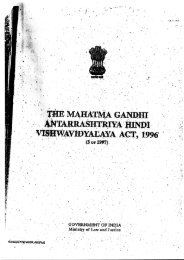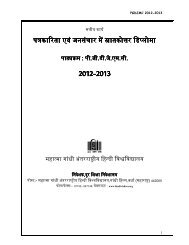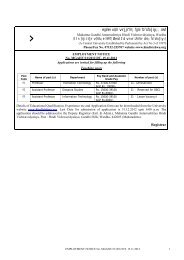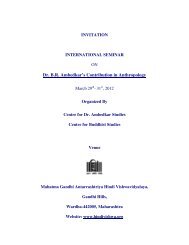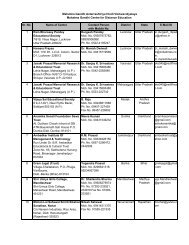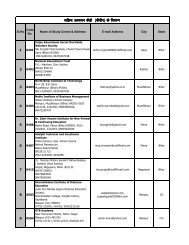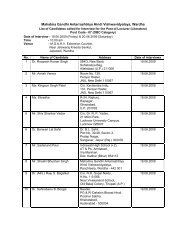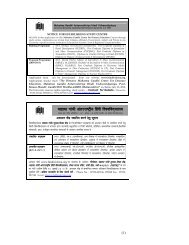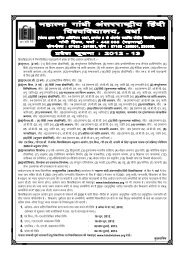Mamta Kalia
Mamta Kalia
Mamta Kalia
Create successful ePaper yourself
Turn your PDF publications into a flip-book with our unique Google optimized e-Paper software.
he used to come to our house in Almora.<br />
He visited us a number of times. I also<br />
participated in the discussions with him<br />
and in spite of not being familiar with<br />
his views and works, the impression his<br />
personality had left on me has been<br />
revived. My inner voice, therefore,<br />
prompted me to accept this invitation<br />
from Pahad and also the topic given<br />
for the talk. I remembered that Rahulji<br />
was not only a scholar; he had also<br />
written a lot on the Himalayas. The<br />
Himalayas, in their many aspects, were<br />
a source of inspiration for him and he<br />
had great attachment for their people,<br />
their society, culture and civilization.<br />
Today, in this region of Uttarakhand as<br />
in many other regions of India, serious<br />
problems are arising; great turmoil and<br />
turbulence is being witnessed and new<br />
hopes and aspirations are emerging. In<br />
what backdrop should we view them?<br />
From what perspective should we<br />
consider them? What direction should<br />
we give to the mass awakening of which<br />
we find explosion in the hill regions<br />
in many other regions. Giving thought<br />
to all these issues, I realised that we<br />
need Rahulji’s comprehensive way of<br />
looking at things and his capacity to<br />
trace a problem to its roots. We should<br />
not only accept his thinking but also<br />
his method of analysis and habit of a<br />
ruthless enquiry and research. His<br />
analysis was not based only on statistics<br />
and recorded facts or confined to a study<br />
of dead history but was also permeated<br />
with the desire to draw the local people<br />
and communities as partners in bringing<br />
the live manifestations and flow of<br />
traditions to light.<br />
What modern anthropology calls “field<br />
work or participant observation” the<br />
wondering researcher that Rahulji was<br />
undertaking throughtout his life and on<br />
its basis had given us a new insight<br />
into social transformations and cultural<br />
and civilisational processes beyond<br />
anything that a research based merely<br />
on books or records could give us. The<br />
age-old conflict between the dead and<br />
the living elements in our cultural legacy,<br />
Rahulji could comprehend in all its<br />
aspects only because his study of Indian<br />
culture was not based merely on what<br />
the eminent social scientist, M.N.<br />
Srinivas, has called a “book view” but<br />
also had a foundation in a “field view”.<br />
This study was not circumscribed by<br />
limitations of any dominant class or caste<br />
outlook. By internalizing the perceptions<br />
and experiences of the people, it provided<br />
a new range and depth to his discovery<br />
of India. I feel what we need today is<br />
this view from below which alone can<br />
show us the right direction.<br />
If you will turn the pages of Rahulji’s<br />
research works on Kumaon and Garhwal,<br />
you will find that, on the basis of his<br />
deep study, he has drawn some<br />
conclusions. At the end, in four or five<br />
pages only, referring to this region’s<br />
cultural legacy he has called it the legacy<br />
of “cultural accommodation”. In his view,<br />
this history of the Himalayas is not a<br />
‘regional history’ in a narrow sense, nor<br />
April-June 2010 :: 33




